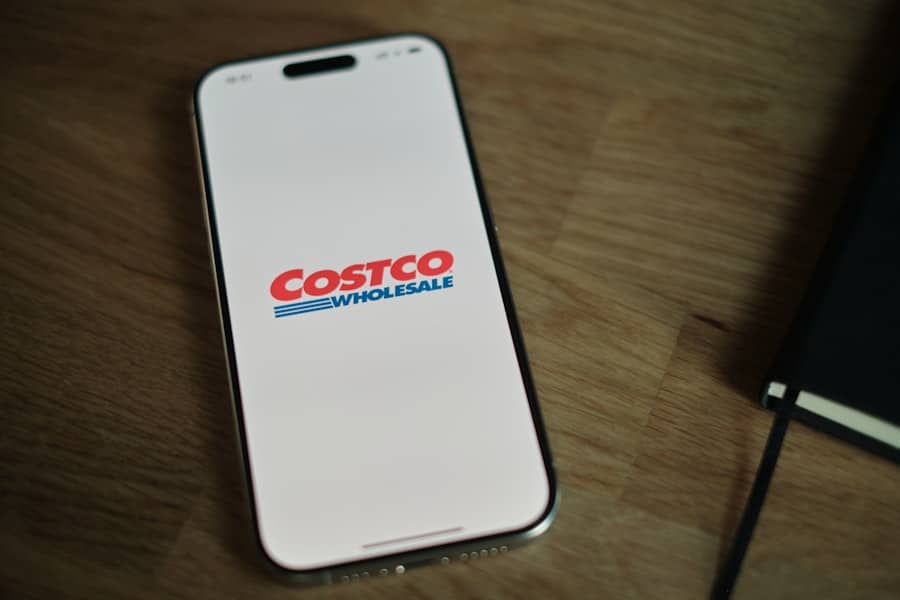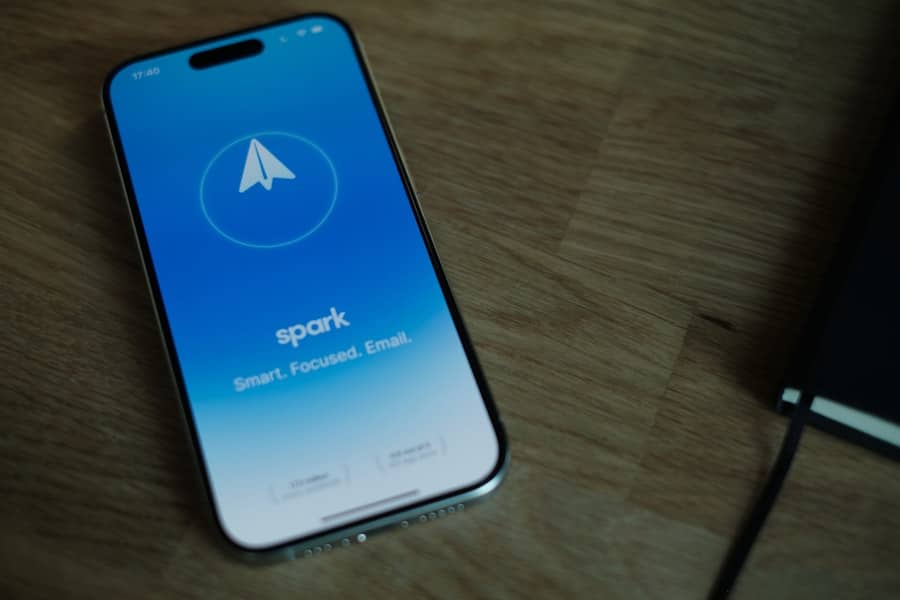In the rapidly evolving landscape of retail, grocery stores are increasingly turning to advanced technologies to streamline operations and enhance customer satisfaction. One of the most transformative innovations in this domain is Predictive AI, which leverages data analytics and machine learning to forecast consumer needs and optimize inventory management. This technology enables grocery retailers to anticipate demand for products, ensuring that shelves are stocked with the right items at the right time.
As consumer preferences shift and market dynamics change, the ability to predict purchasing behavior becomes a critical asset for grocery businesses aiming to maintain competitiveness. Predictive AI in grocery reordering is not merely about automating stock replenishment; it encompasses a comprehensive understanding of consumer behavior, seasonal trends, and even external factors such as economic conditions or local events. By harnessing vast amounts of data—from past sales figures to social media trends—grocery retailers can create sophisticated models that inform their reordering processes.
This approach not only minimizes waste and reduces stockouts but also enhances the overall shopping experience for customers, who benefit from a more reliable supply of their preferred products.
Key Takeaways
- Predictive AI in grocery reordering uses advanced technology to anticipate consumer needs and automate the reordering process.
- Using predictive AI for grocery reordering can lead to improved inventory management, reduced waste, and increased customer satisfaction.
- Predictive AI analyzes consumer behavior and preferences by collecting and analyzing data from various sources such as purchase history, browsing patterns, and social media activity.
- Machine learning plays a crucial role in predictive AI for grocery reordering by continuously learning and adapting to new data to make more accurate predictions.
- Integrating predictive AI with inventory management systems can streamline the reordering process, minimize human error, and optimize stock levels for retailers.
The Benefits of Using Predictive AI for Grocery Reordering
Reduced Inventory Costs
By accurately predicting which products will be in demand, grocery stores can optimize their stock levels, minimizing excess inventory that often leads to spoilage, especially for perishable goods. This not only conserves resources but also improves the store’s bottom line by reducing waste-related losses.
Enhanced Customer Satisfaction
Predictive AI enhances customer satisfaction by ensuring that popular items are consistently available. When customers find their preferred products in stock, they are more likely to return to the store, fostering loyalty and repeat business.
For instance, if data indicates a rising interest in plant-based products, stores can adjust their inventory accordingly, positioning themselves as leaders in catering to evolving dietary choices.
How Predictive AI Analyzes Consumer Behavior and Preferences

At the heart of Predictive AI’s effectiveness in grocery reordering lies its ability to analyze consumer behavior and preferences through sophisticated algorithms. These algorithms sift through vast datasets that include historical sales data, customer demographics, seasonal trends, and even external factors like weather patterns or local events. By employing techniques such as clustering and regression analysis, Predictive AI can identify patterns that may not be immediately apparent to human analysts.
For example, a grocery store might notice that sales of ice cream spike during warm weather months or that certain snacks see increased sales during major sporting events. By recognizing these patterns, retailers can adjust their reordering schedules to ensure that they have adequate stock on hand during peak demand periods. Furthermore, Predictive AI can segment customers based on purchasing behavior, allowing stores to tailor promotions and product placements to specific demographics.
This level of personalization not only enhances the shopping experience but also drives sales by aligning inventory with consumer preferences.
The Role of Machine Learning in Predictive AI for Grocery Reordering
Machine learning serves as a cornerstone of Predictive AI, enabling systems to learn from data over time and improve their forecasting accuracy. Unlike traditional statistical methods that rely on fixed models, machine learning algorithms adapt and evolve as new data becomes available. This dynamic capability is particularly beneficial in the grocery sector, where consumer preferences can shift rapidly due to trends, seasons, or even global events.
For instance, a machine learning model might initially predict demand for a specific brand of cereal based on historical sales data. However, as it processes new information—such as a viral social media campaign promoting a healthier alternative—the model can adjust its predictions accordingly. This adaptability allows grocery retailers to stay ahead of market trends and respond swiftly to changes in consumer behavior.
Additionally, machine learning can enhance inventory management by predicting not just what products will sell but also when they will sell, enabling more precise reordering schedules.
Integrating Predictive AI with Inventory Management Systems
The successful implementation of Predictive AI in grocery reordering hinges on its seamless integration with existing inventory management systems. These systems serve as the backbone of grocery operations, tracking stock levels, managing supplier relationships, and facilitating order placements. By incorporating Predictive AI into these systems, retailers can create a more cohesive and efficient workflow that enhances decision-making processes.
For example, when Predictive AI forecasts an increase in demand for a particular product, it can automatically trigger reorder alerts within the inventory management system. This integration minimizes the risk of human error and ensures that orders are placed promptly, reducing the likelihood of stockouts. Furthermore, real-time data sharing between Predictive AI and inventory systems allows for continuous monitoring of stock levels and sales trends, enabling grocery retailers to make informed decisions based on up-to-date information.
Challenges and Limitations of Predictive AI in Grocery Reordering

Data Quality and Availability
One significant limitation is the quality and availability of data. For Predictive AI models to function effectively, they require access to comprehensive datasets that accurately reflect consumer behavior and market conditions. In many cases, grocery retailers may struggle with incomplete or inconsistent data, which can hinder the accuracy of predictions.
Integration with Legacy Systems
Another challenge is integrating new technologies with legacy systems that may not be designed to accommodate advanced analytics. Many grocery retailers operate on outdated inventory management platforms that lack the flexibility needed for seamless integration with Predictive AI tools.
Organizational Resistance to Change
Furthermore, there is often resistance to change within organizations; employees may be hesitant to adopt new systems or may lack the necessary training to utilize them effectively. This can hinder the successful implementation of Predictive AI in grocery reordering, despite its potential benefits.
Case Studies of Successful Implementation of Predictive AI in Grocery Reordering
Several grocery retailers have successfully implemented Predictive AI in their reordering processes, showcasing its potential benefits. One notable example is Walmart, which has invested heavily in data analytics and machine learning technologies to optimize its supply chain operations. By analyzing vast amounts of sales data and customer insights, Walmart has been able to predict demand fluctuations with remarkable accuracy.
This has allowed the retail giant to reduce stockouts significantly while minimizing excess inventory across its stores. Another compelling case is that of Kroger, which has utilized Predictive AI to enhance its personalized marketing efforts alongside inventory management. By analyzing customer purchase histories and preferences, Kroger has been able to tailor promotions and product recommendations effectively.
This approach not only boosts sales but also ensures that stores are stocked with items that resonate with local consumers’ tastes. The integration of Predictive AI into Kroger’s operations has resulted in improved customer satisfaction and increased loyalty among shoppers.
The Future of Predictive AI in Automating Grocery Reordering
Looking ahead, the future of Predictive AI in automating grocery reordering appears promising as technology continues to advance. As machine learning algorithms become more sophisticated and capable of processing larger datasets in real-time, grocery retailers will be able to achieve even greater accuracy in demand forecasting. This evolution will likely lead to more automated systems that require minimal human intervention while maximizing efficiency.
Moreover, as consumer expectations evolve towards greater personalization and convenience, grocery retailers will need to leverage Predictive AI not just for reordering but also for enhancing the overall shopping experience. Future applications may include personalized shopping assistants powered by AI that guide customers through stores based on their preferences or even automated checkout systems that streamline the purchasing process. In conclusion, as grocery retailers embrace the capabilities of Predictive AI in their reordering processes, they will be better equipped to navigate an increasingly complex market landscape while meeting the demands of modern consumers.
The integration of advanced analytics into everyday operations will not only drive efficiency but also foster deeper connections between retailers and their customers through tailored experiences and reliable product availability.
In a recent article on the best WordPress hosting companies in 2023, the importance of reliable and efficient web hosting services is highlighted. Just like how predictive AI can streamline grocery reordering processes, having a top-notch hosting provider is crucial for ensuring smooth website operations. Both predictive AI and reliable hosting services play a significant role in optimizing efficiency and automation in different aspects of business operations.
FAQs
What is predictive AI in the context of grocery reordering?
Predictive AI in grocery reordering refers to the use of artificial intelligence algorithms to analyze historical purchasing data, trends, and other relevant factors to predict and automate the reordering of grocery items.
How does predictive AI automate grocery reordering?
Predictive AI automates grocery reordering by analyzing past purchasing patterns, inventory levels, and external factors such as seasonality and promotions to predict when and how much of each item needs to be reordered. This automation helps to streamline the replenishment process and minimize stockouts or overstocking.
What are the benefits of using predictive AI for grocery reordering?
The benefits of using predictive AI for grocery reordering include improved inventory management, reduced stockouts and overstocking, optimized supply chain efficiency, and enhanced customer satisfaction through consistent product availability.
What are some examples of predictive AI applications in grocery reordering?
Examples of predictive AI applications in grocery reordering include automated replenishment systems that use machine learning algorithms to forecast demand, smart shelving solutions that track product levels and automatically place orders, and predictive analytics tools that provide insights into consumer behavior and preferences.
What are the potential challenges or limitations of using predictive AI for grocery reordering?
Challenges and limitations of using predictive AI for grocery reordering may include the need for accurate and comprehensive data, potential biases in the algorithms, and the requirement for ongoing monitoring and adjustments to ensure the predictions remain accurate and relevant. Additionally, there may be concerns about data privacy and security.

